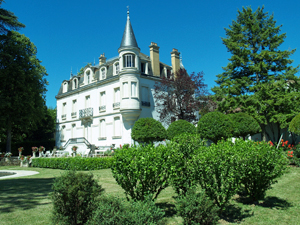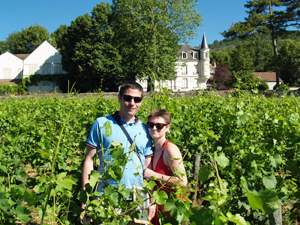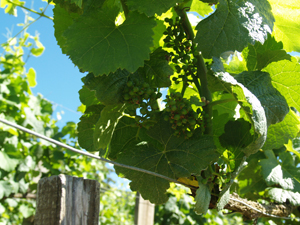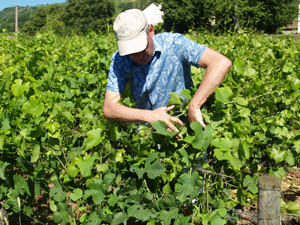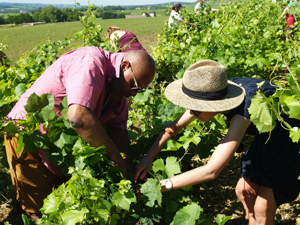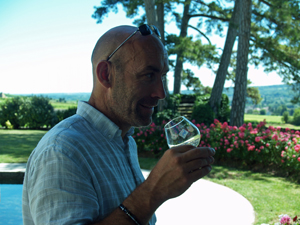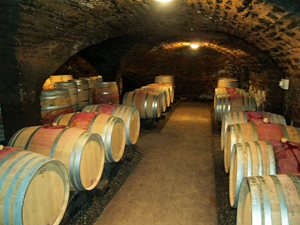De-budding the organic vines in the Languedoc
- Categories :
- Enjoying Wine
- Languedoc-Roussillon
- Allegria
We then headed out into the vineyard to find the plot of Syrah vines that have been adopted for the Gourmet Odyssey Wine Experience. Blended with a neighbouring plot of Mourvèdre, their grapes will be used to make the 2019 Tribu d’A, an organically certified AOC Coteaux du Languedoc Pézenas red wine. We took a few minutes to take some souvenir photos.
After having explained the work carried out in the vineyard since the start of the year to prune and de-bud the vines, we continued our walk through the vines.
We made our way to the plot of Carignan white that was planted in 2018. Since our last visit, the vines have grown a lot thanks to the rain in May, and the heat of the last couple of weeks. Time to get down to some work. Ghislain showed us how to de-bud the vines and attach the long branches to the wooden posts. It’s a job that has to be done carefully as it will lay the foundation for the next 50 years.
When we de-bud the vines, we reduce the number of branches which grow, only keeping those that will produce fruit, so as to concentrate the energy of the plant on the growth and maturity of the grapes to come.
As the branches grow quickly at this time of year, and start to become loaded with grapes, the bend with their weight, and fall into the middle of the vine rows. To be able to continue to work the vines and the soil, we need to be able to get the tractor into the vineyard, and so the branches must be carefully held between the training wires. It also helps us to better control the amount of sun that reaches the grapes and improve the air flow around the leaves and fruit, which in turn helps reduce the risk of mould.
At the end of the morning, we enjoyed the shade of the terrace in front of the winery. We enjoyed discovering and tasting the different wines of the winery over lunch that was prepared by Delphine, the winemaker.
After lunch, we visited the fermentation hall to discover what happens on the wine-making side of things. Here the grapes will be brought at harvest time, and we saw the barrel room where the wine will slowly age. We’ll find out more when we return for the Harvest and Vinification Experience Days.
Many thanks to all for this great wine discovery day!



